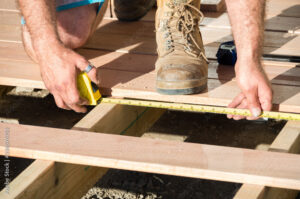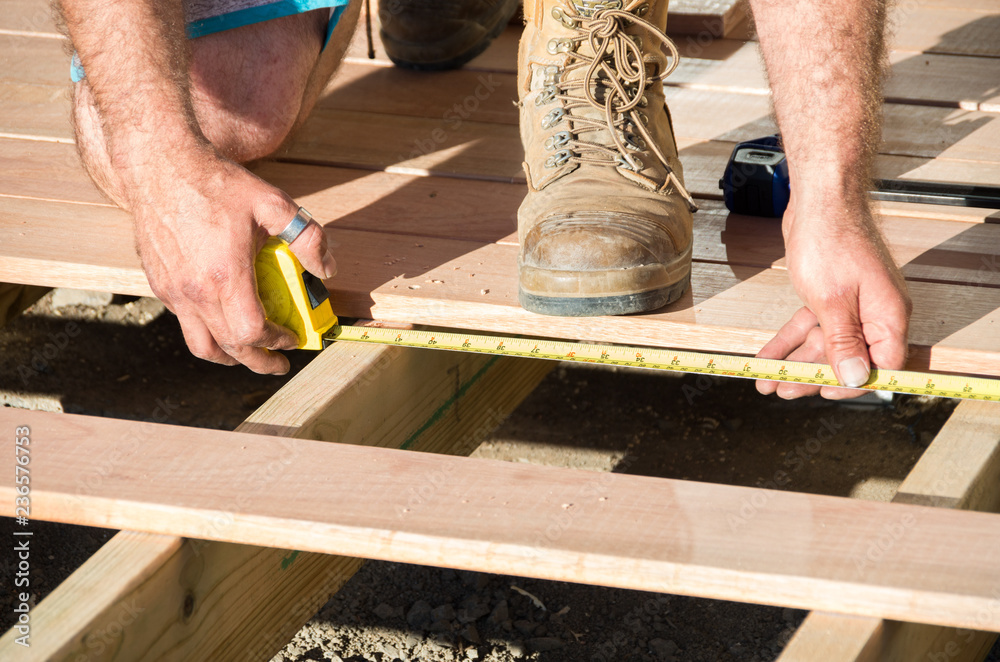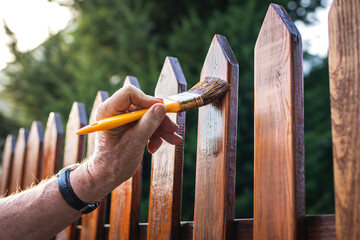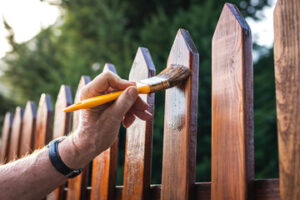Building a home deck is a great way to add value to your property. Depending on your style and materials, it can also be low maintenance. A deck is a space above the ground that usually overlooks your backyard. It’s typically accessed from the house through sliding glass doors or a stairway. Check out https://deckbuilderscharleston.com/ to find the most suitable deck for your home.

Home decks are a great way to add more living space and make it easier to relax outside. They can also provide a place for guests to gather for summer parties and family barbecues. You can add features like a grill, outdoor furniture, and lighting to maximize your deck’s potential for relaxation and entertainment.
The most popular material for home decks is wood. It is available in a wide range of colors and can be stained or painted to match your home’s exterior design. A stain can also help protect the wood from stains, mildew, and rot. Many different types of wood are used for home decks, including pressure-treated lumber, redwood, and cedar. Cedar is naturally insect-repellent and rot and mold-resistant, while redwood is naturally weather-resistant and has good strength.
While wood is a cost-effective choice, it requires regular maintenance to keep it in good condition. It needs to be swept and washed periodically, and it must be sealed or stained every three to four years. It is also important to inspect the deck regularly for damage or wear. If you notice any problems, such as warped boards or rotting joists, you must take action immediately to prevent further damage.
A home deck can be a great addition to your home, but you must use the right materials for safety and durability. It is a good idea to visit the local building inspection office before starting any project. These offices are usually very helpful and will work with DIYers.
A deck can improve the livability of your home and increase its value. You can easily recoup 72 percent of its costs when you sell it. Sometimes, a deck can add more to your home’s resale value than a garage or sunroom. It should be constructed according to the most current building codes. It should also be built over a solid foundation properly supported by joists and anchored to the house with deck fasteners or joist hangers to ensure your deck is safe.
Building a home deck is a fairly easy DIY project for most handy homeowners. However, like any project of this magnitude, it’s important to be sure the job is within your abilities and that you have access to the right tools. A quick visit to your local hardware or home improvement store will help you create a plan and list all the supplies and equipment you’ll need for the job. Some stores will even help you find the proper tools for your needs – for free.
Begin by staking out your deck location with stakes and twine. Choose a level area of undisturbed soil that is about 20 square feet. Lay out three lines 12 feet long, parallel to each other, and spaced 3-1/2 feet apart. Each bar represents the location of a deck beam. Using a level, check that the lines are level. If they aren’t, you must make adjustments before building the deck.
Next, install a ledger board. This board connects the deck to the house, and it must be properly secured. Use flashing to prevent water from getting between the ledger and the house wall, which can cause damage. Fasten the register to the rim joist with lag screws, and make sure they are driven through the joist hanger’s flange and into the wood to create the strongest connection possible.
Depending on your design, you’ll want to mark footing locations at the deck’s outside corners and eight-foot intervals along the front rim joist. Temporarily remove the mason’s strings to complete this step. Dig a large hole at each site to hold the pier form and extend below the frost line. Assemble the pier forms, place them in the gaps, and gently backfill.
You’ll also need to set posts into post bases. If your plans call for posts, use a post-hole digger to dig holes at each location at least as deep as the bottom of the pier form. Assemble post hardware, then set each post into its base.
A deck is a home addition that is a valuable investment. It is a popular choice for homeowners because it provides an additional area to relax and entertain guests. Homeowners can install a grill and other amenities to make their deck more functional. In addition, decks can provide a more attractive yard and enhance the aesthetics of a property.
Homeowners can choose from a variety of materials to build their decks. Each material has different advantages and disadvantages. However, it is important to consider the deck’s location before choosing a material. The deck’s location will determine the amount of sunlight and wind it receives. It is choosing a deck design that fits the style of your home. You can also add an outdoor fireplace to the deck to increase appeal.
Adding a deck to your house is one of the best ways to improve its value. It is because it can attract potential buyers and increase your resale value. It can also make your house stand out from the rest of the neighborhood. Moreover, it can increase your curb appeal and reduce the time it takes to sell your home.
When planning to build a deck, consulting with local building inspectors is important. It will ensure that your deck is built to code and will not cause problems later. It will also help you avoid costly mistakes during the construction process.
It is also important to consult with an architect before constructing your deck. They will help you choose the right materials and design for your deck. Moreover, an architect will also provide you with a project cost estimate. It will help you decide if your deck is a good investment for your home.
Although a deck can increase your home’s resale value, it is important to do your homework before deciding whether or not it is worth the investment. While many home improvements may look nice and attractive, they may not add value to your home. Having a deck that is well-designed and built with quality materials will be beneficial for your home’s resale price.
A home deck provides a comfortable outdoor living space that can be used for relaxing, entertaining, or grilling. Regardless of how you use your deck, it can add a stylish touch to your home’s exterior and improve your property’s overall value. A deck also helps you spend more time outdoors, which has many health benefits.
Deck ideas can be simple to elaborate and tailored to suit your needs and lifestyle. For example, if you enjoy reading or playing games, consider installing a cozy outdoor rug and some comfortable seating. A few pretty throw pillows can tie the look together and make it feel more like an indoor living room.
An outdoor kitchen is a great idea if you plan to entertain guests on your deck. This space can be outfitted with a grill, refrigerator, and other appliances that can be used for cooking and dining. It is a wonderful addition to any home and can be especially useful when outdoor barbecues are common in the summer.
Another way to increase your deck’s functionality is to install a bar with stools. You can find seats made of durable materials that will stand up to the weather and can be easily moved to create more seating when needed. You can also add a cooler to keep drinks cold and some mood lighting to create a more intimate atmosphere after dark.
You can incorporate glass panels into your deck railings for a more contemporary look to provide protection and add style. You can also install a wall of greenery to add privacy and create a soothing atmosphere. Plants like clematis and climbing roses grow beautifully up lattice walls and can be pruned to maintain the desired height and shape.
Whether you want to build an entirely new deck or spruce up your existing one, there are plenty of ideas and inspiration to help you get started. Take the time to research and consult a professional, and you can be well on your way to creating a beautiful outdoor retreat that will make your home the envy of the neighborhood.


 Check The Pickets
Check The Pickets
 There are a few factors that determine the cost of metal fencing installation. The type of fencing material that is chosen is one important consideration. Iron fences, for example, typically cost more than aluminum. The height of the fence also impacts the overall cost. The number of gates and their style is another factor. For example, a 3-ft gate costs more to install than a 1-ft gate. The terrain where the fence will be installed is another factor. For instance, if the area is on a slope, installing the fence will require more labor.
There are a few factors that determine the cost of metal fencing installation. The type of fencing material that is chosen is one important consideration. Iron fences, for example, typically cost more than aluminum. The height of the fence also impacts the overall cost. The number of gates and their style is another factor. For example, a 3-ft gate costs more to install than a 1-ft gate. The terrain where the fence will be installed is another factor. For instance, if the area is on a slope, installing the fence will require more labor.